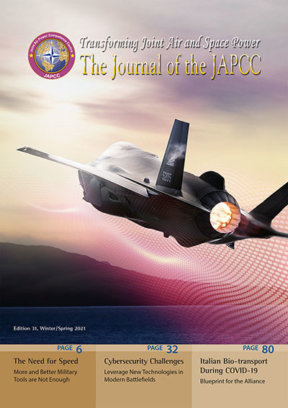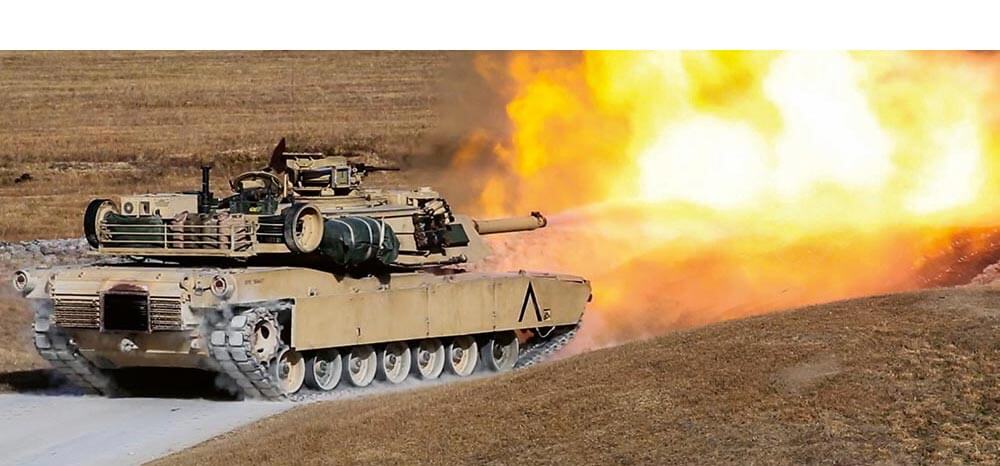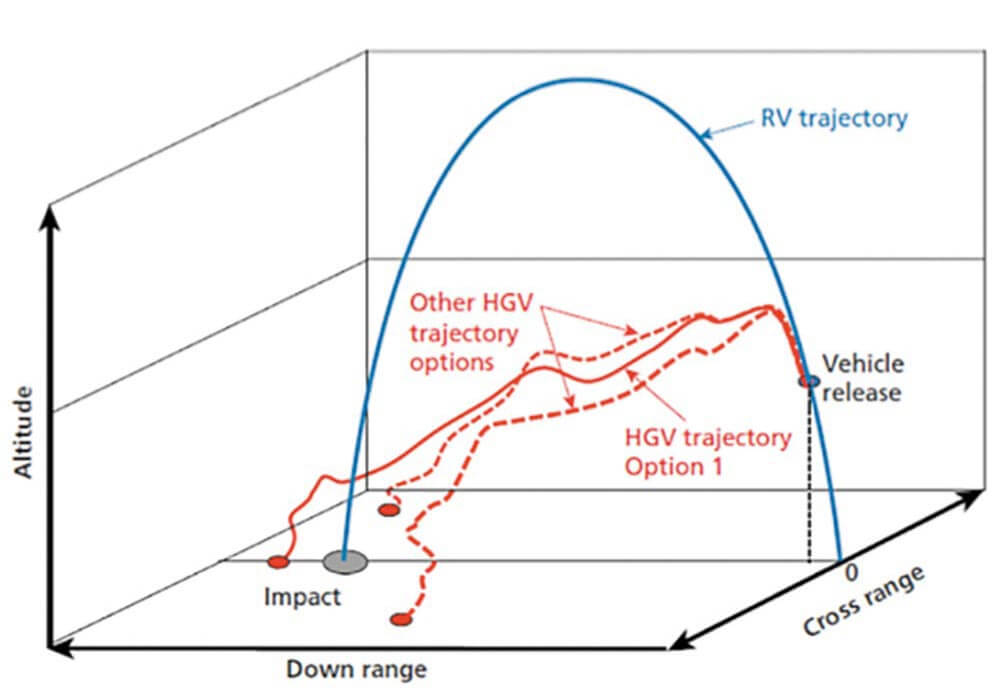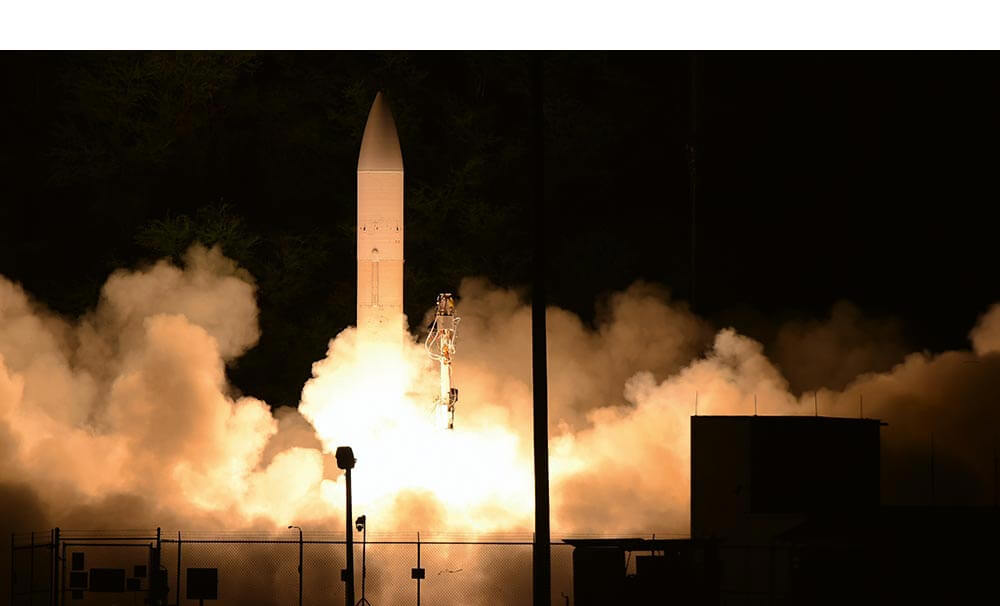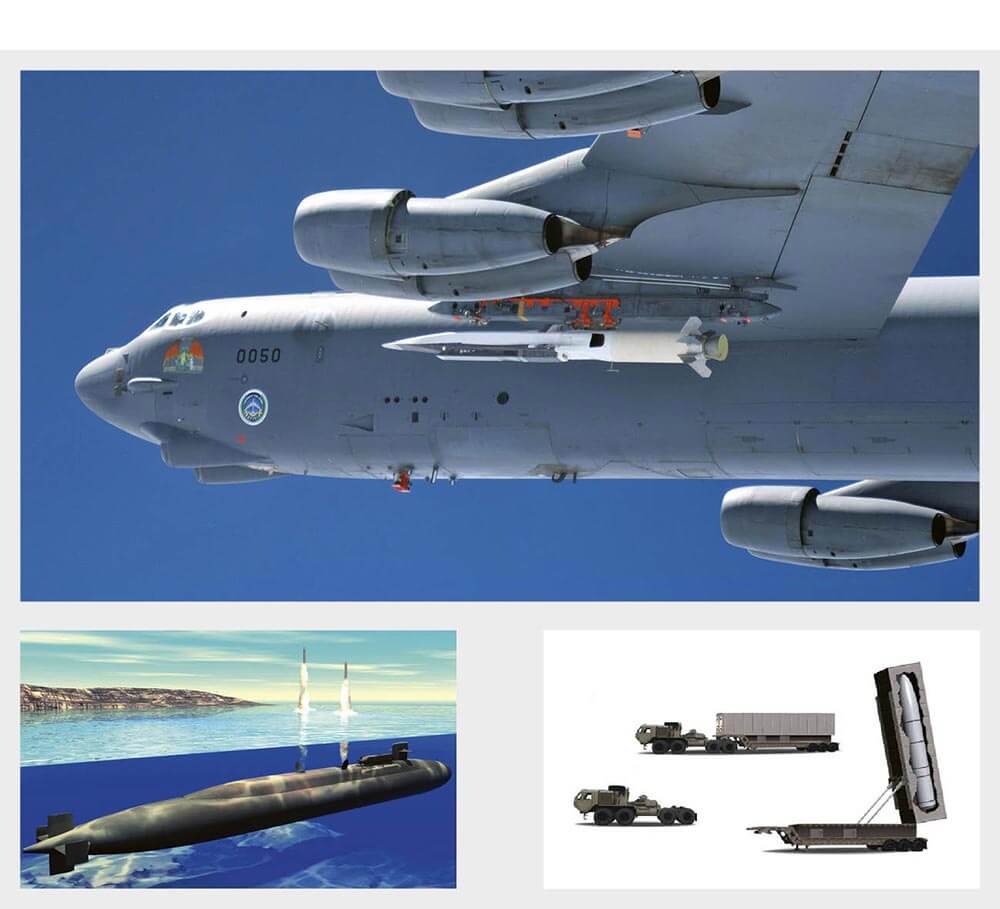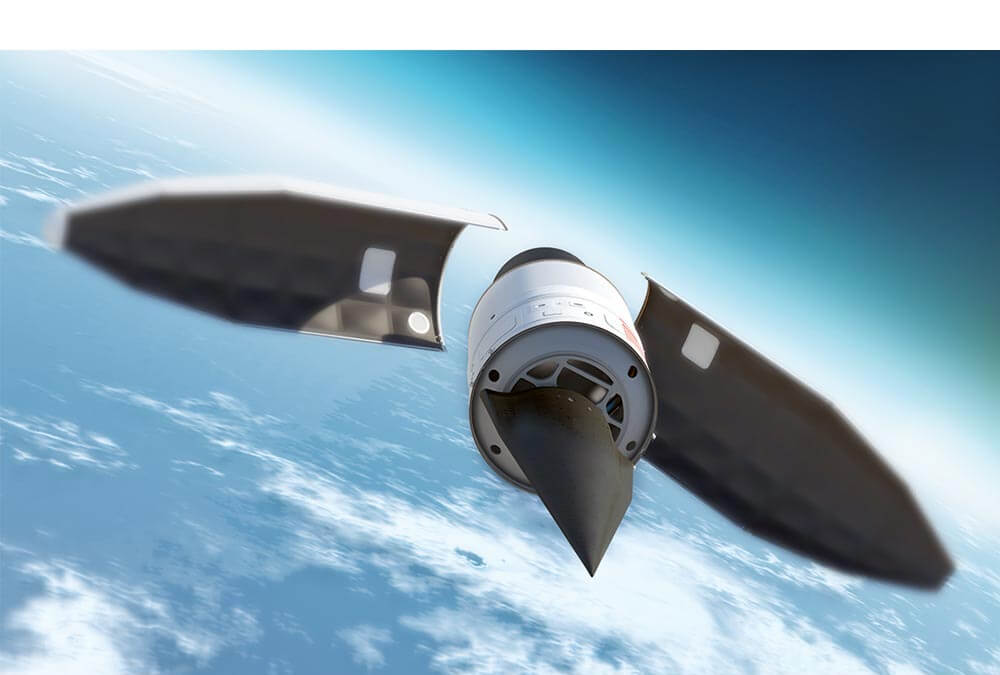‘The military services are ramping up spending on hypersonic weapons and defense capabilities, from rocket-based glide systems to air-breathing weapons to low-altitude cruise missiles and more.’1
Where to Start
Advances in technology continue to outpace the techniques, procedures, and doctrinal aspects of how a new weapon integrates into the Joint Force, specifically Hypersonic Strike Weapons (HSW). The ‘traditional model’ has been ‘develop what we want, we will figure things out later’, which can thicken the fog of war due to unintended second- and third-order effects that were not originally considered. Figuring out the use aspect, prior to full weapon development instead of after, can rapidly improve Joint Force integration. At the same time, technology’s rapid advancement can and does outpace doctrinal development which also challenges training.
M1A1 Abrams Main Battle Tank.2 © US Marine Corps, Cpl. Austin Livingston
What is the Rationale?
Manoeuvrable HSWs are not new. Research began during the Cold War in the US and Soviet Union, but various technological hurdles resulted in a ‘start/stop’ approach that continued through the end of the Cold War and follow on period of perceived peace.3 Such hurdles encompass the areas of propulsion, navigation, and heat resistance due to the high speeds involved. However, recent 21st Century technological developments have led to progress in a number of areas. These advancements have enabled China, Russia, and the US to develop and test HSWs with China and Russia fielding HSWs.4
Recent demonstrations, claims, and military parades by China and Russia appear to show both countries are ahead of the US in HSW development. China unveiled new HSWs at a military parade in 2019 and Russia claims to have tested HSWs in 2018, fielding an aircraft-launched HSW called Kinzhal and a land-based HSW identified as Avangard in 2020. How these countries and the US, view HSW use and Joint Force integration differs – to include perceptions of the actual advantage of the weapon.
During the Cold War, the nuclear triad of Intercontinental Ballistic Missiles (ICBM), Air-Launched Cruise Missiles (ALCM), and Submarine Launched Ballistic Missiles (SLBM) provided the superpowers with a strategic measure of deterrence and power. However, ICBMs, ALCMs, and SLBMs can be tracked by sensors due to their stable ballistic trajectory allowing target assessment based on their flight path. HSWs introduce a measure of unpredictability after launch. This is due to lack of sensor optimization to accurately predict, target, and intercept HSWs as they fly towards their targets which remain unknown until the final seconds due to the speed and manoeuvrability of HSWs.
Ballistic Reentry Vehicle (RV) versus Hypersonic Glide Vehicle Trajectories. © Courtesy of RAND, document RR-2137-CC5
ICBMs required significant resources and were developed in secret. This meant that only countries with the resources for development and fielding could afford these weapons. Further, actual use of ICBMs beyond their deterrence attributes is less likely than use of HSWs; especially as US HSWs are planned to only carry conventional payloads. From a cost perspective, HSWs will be less expensive than a SLBM (USD 31 million for a D5/TRIDENT II) compared to an estimated USD 6.9 million per HSW.6,7
‘Hypersonic missiles are a key military capability because we can reach out and launch these things from thousands of kilometres and hit their targets within a few feet. Their high speed also makes them extraordinarily survivable because it is so hard to shoot down, and that’s why the United States as well as Australia are aggressively pursuing this technology.’
Dr George Ka’iliwi III, US Indo-Pacific Command J88
Increasing capability as a cost reduction attribute is not just something the US, China, and Russia are working towards. The development of HSWs has spread to international partner nations (e.g., Australia and India) who are benefiting from teaming with the US, China, and Russia. This teaming could provide for further cost reduction due to sharing HSW technology development. Additionally, Japan, France, and Germany are in development of their own HSWs and benefit from available research.9
Common HSW warhead launch, Pacific Missile Range Facility, Kauai, HI, 19 March 2020.11 © US Navy, Oscar Sosa
Who is Doing Something About It?
In the US, HSW development and testing continues at a more measured pace specific to the fielding of conventional armed systems. This approach requires developing a high degree of accuracy that Russian and Chinese weapons do not require with their intention to maintain nuclear-capable HSWs. Recent US testing of HSWs in 2017 and 2020 resulted in successful flight test events towards the development of a common HSW warhead.10
An additional HSW aspect to consider is the potential response that may occur from an adversary after a ‘first use’, especially if the adversary has their own HSWs and is a nuclear power. Critical to HSW use is ensuring an adversary nation does not confuse a HSW launch with the launch of an ICBM or SLBM, particularly through proper messaging of the new capability. The impact of adversary propaganda, disinformation, and wide-scale efforts to misinform or create a media panic must be managed related to a potential war between nuclear-armed nations. To date, there are only two examples of such wars. Yet the aspect of vertical escalation towards nuclear weapons use was identified and managed by the nations involved – 1969 Sino-Soviet war and 1999 Kargil war between India and Pakistan. Neither conflict had the aspect of instant news and social media that will have a definite impact on information operations and strategic messaging to keep escalation from occurring in a future conflict.12
How to Start HSW Incorporation?
Most reports on HSWs have been specific to the development of the weapon, problems of control at hypersonic speeds (in excess of Mach 5 or 3,800 miles per hour), and missile/rocket body design to boost the warheads to high speed. Yet the ability of HSWs to hold a target at risk because of the speed and unpredictability attributes, coupled with the difficulty in identifying the specific target, should be driving discussions on concept of operations (CONOPS) development before, not after, HSWs are fielded. Producing HSWs is not as easy as simply opening or retooling a production line. HSWs require a long lead production time, resulting in low availability until production efficiency is achieved. How to incorporate HSWs into planning and, ultimately, senior leader understanding of use effects must be resolved before HSWs are fielded.
Developing factors specific to Command and Control (C2) authorities and planning for HSWs at the operational and strategic levels of war requires early consideration development. The Joint-Hypersonic Strike Planning, Execution, Command and Control (J-HyperSPEC2) Joint Test (JT) was chartered in August 2018 under the authority of the Office of the Secretary of Defense (OSD), Director, Operational Test and Evaluation. J-HyperSPEC2 JT’s charter is to develop, test, and evaluate a C2 CONOPS to manage authorities, support employment, planning, and execution for HSWs. With the continual push for rapid development and fielding, the J-HyperSPEC2 JT is at the forefront of planning for the deployment and use of these new weapons.
The J-HyperSPEC2 JT is sponsored by US Strategic Command (USSTRATCOM) with the team operating in two locations: Offutt Air Force Base (AFB), Nebraska, and Nellis AFB, Nevada. The J-HyperSPEC2 JT team worked closely with several Combatant Commands (CCMD), Services, and OSD to develop an initial CONOPS through two writing groups. The J-HyperSPEC2 JT team conducted a multi-part field test to collect data on the CONOPS for revision and validation.
The A2/AD Challenge
The Joint Force remains over-reliant on stand-off weapons and fourth-/fifth-generation strike platforms to address the Anti-Access/Area Denial (A2/AD) challenge. As the adversary countries continue to push their ‘A2/AD bubble’ outwards, developing weapons to overcome this expansion enables a way to get within the adversary’s decision-making process.
To address the A2/AD expansion aspect to better integrate HSWs, the J-HyperSPEC2 JT conducted development and refinement efforts using warfighter inputs from events such as CONOPS writing groups and CCMD exercises as test events to test and refine the CONOPS. The team interacted with US European Command (USEUCOM); Commander, Submarine Force, US Pacific Fleet; USSTRATCOM; and the 805th Combat Training Squadron. The resulting C2 CONOPS was field-tested at US Indo-Pacific Command’s (USINDOPACOM) Exercise Pacific Sentry (PS) in January 2020 in Hawaii.
The J-HyperSPEC2 JT trained exercise participants on the CONOPS and notional HSW capabilities and then observed deliberate planning and dynamic targeting processes. The test’s data collectors observed HSW discussions and planning efforts at lower echelon components, gathered multiple data points to inform CONOPS revisions and, concurrent with the PS exercise, the team supported the integration of HSW into the Chairman of the Joint Chief of Staff’s Global Integration Exercise 20. This integration enabled discussions of US conventional HSW ‘first use’. Post-exercise, a series of General Officer/Flag Officer interviews and roundtables occurred to gain insight on how senior leaders identify HSW integration, authorities of use, escalation, and strategic messaging.
Representative examples of air-, sea-, and land-HSW launchers. © B-52: US Air Force © Submarine: US Navy graphic © Ground Launcher: Army Rapid Capabilities and Critical Technologies Office13,14,15
Looking Forward
Exploring the ‘how to use and when’ aspects are part of the CONOPS development. Specific to the use aspect, the team identified early in CONOPS development a lack of planning tools to support planner’s efforts to incorporate HSWs into operations. While several entities were developing such tools, they were not ready for use during the PS exercise. To enable CONOPS testing the team developed a Mission Planning Handbook (MPH) as a surrogate planning tool. The MPH provided PS mission planners with HSW attributes enabling current process planning.
The J-HyperSPEC2 JT has already benefited the Department of Defense (DoD) in getting ahead of the ‘buy, field, develop concept of use’ approach. As the Services field HSWs, enabling them the capability to hold distant, defended, fleeting, and high-value targets at risk, the warfighter will be better equipped to meet national objectives and impose costs on potential adversaries by having a way to do this via the C2 CONOPS.
Depiction of the US Falcon hypersonic test vehicle prior to re-entering the atmosphere.16 © DARPA
The J-HyperSPEC2 JT is currently slated to end in Fall 2020. This does not mean future HSW-related efforts will cease. The C2 CONOPS will provide an effective operational and strategic context to inform HSW use and, eventually, inform development of Tactics, Techniques, and Procedures (TTP). Such TTPs will further reinforce the use of HSW by empowering the commander to develop standards in the areas of manning, equipping, training, and planning in the Joint Force. In the interim, the J-HyperSPEC2 JT developed CONOPS will provide planners with a starting point for HSW use while also serving to focus future DoD and industry investment.

